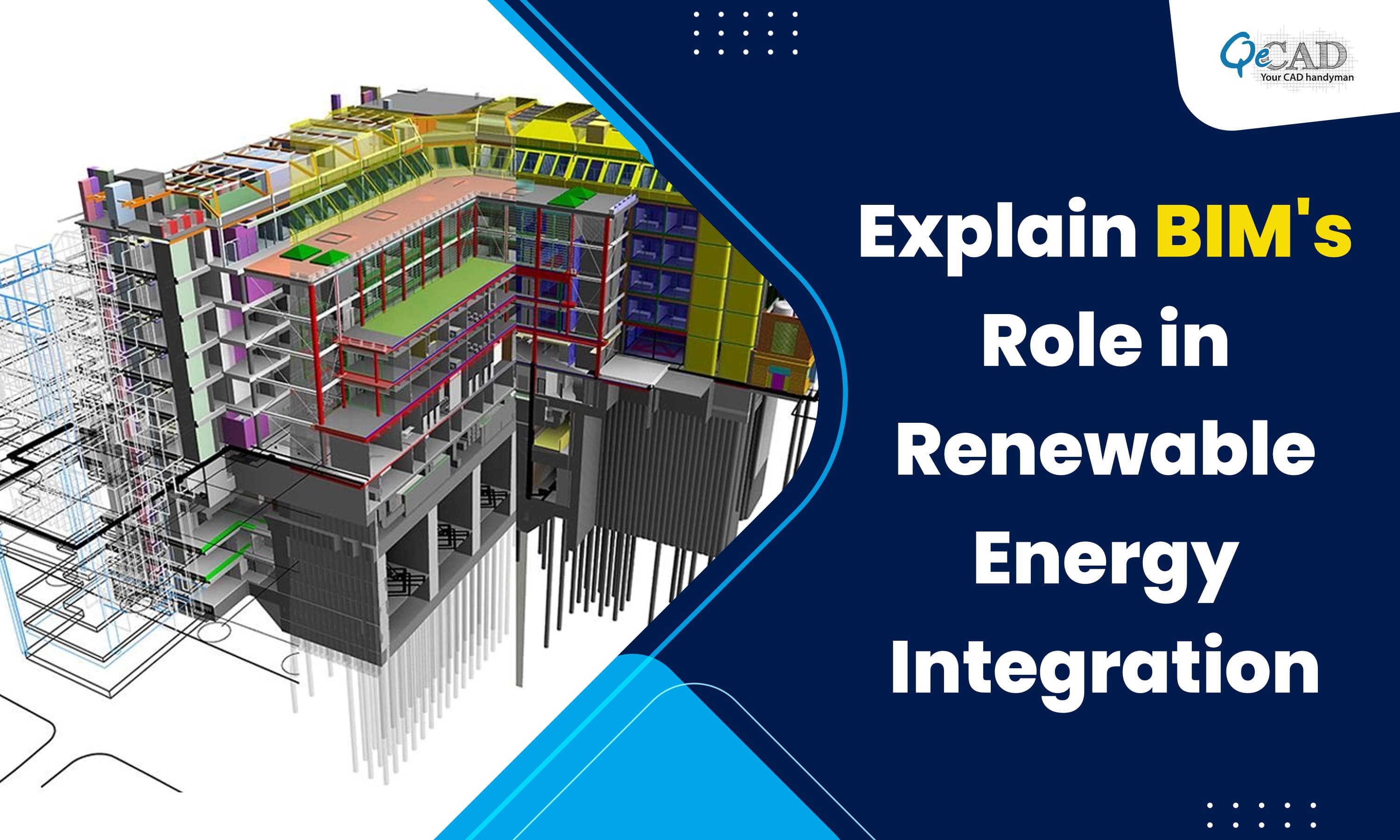
Introduction:
In the ever-evolving scenario of sustainable development, BIM has emerged as a powerful tool that goes beyond traditional construction practices. With a growing emphasis on renewable energy sources, the integration of BIM in the planning, design, and construction phases has become instrumental in optimizing energy-efficiency.
Read the below article to explore the role of BIM in streamlining the incorporation of renewable energy systems into various structures, paving the way for a greener and more sustainable future.
Understanding BIM:
BIM constitutes a digital portrayal of both the physical and functional attributes of a building or infrastructure. Extending beyond 3D modelling, it integrates details about the project’s geometry, spatial connections, geographic data, and quantities, accompanied by precise 4D to 7D Services. This holistic methodology empowers stakeholders to make well-informed decisions across the complete lifecycle of a structure.
BIM in Renewable Energy Integration:
1) Site Analysis and Selection: BIM plays a crucial role in the initial stages of renewable energy integration by facilitating accurate site analysis. By utilizing geospatial data and simulation tools, BIM plays a crucial role in pinpointing the most advantageous locations for renewable energy installations, such as solar panels or wind turbines. This ensures that the chosen sites optimize energy generation potential by considering key factors such as sunlight exposure, wind patterns, and topography.
2) Energy Modelling and Simulation: BIM enables energy modelling and simulation, allowing architects and engineers to assess the performance of renewable energy systems within a building. This involves analysing how solar panels, wind turbines, or other renewable technologies will interact with the structure and contribute to energy production. Through simulations, stakeholders can optimize the design to achieve the highest energy efficiency and determine the economic viability of the chosen renewable solutions.
3) Collaboration and Coordination: BIM promotes cooperation among diverse stakeholders participating in the design and construction phases. Architects, engineers, energy consultants, and construction teams can work seamlessly on a shared platform, ensuring that the integration of renewable energy solutions aligns with the overall project goals. Real-time collaboration reduces errors, enhances communication, and facilitates a more integrated and hassle-free workflow.
4) Lifecycle Management: The advantages of BIM go beyond the construction phase and encompass the entire lifecycle of a building. By creating a digital twin of the structure, BIM allows for ongoing monitoring and optimization of renewable energy systems. This helps in identifying potential issues, predicting maintenance needs, and ensuring the long-term sustainability of the energy solutions integrated into the building.
5) Regulatory Compliance and Documentation: Renewable energy initiatives must adhere to diverse regulations and standards. BIM plays a crucial role in guaranteeing compliance with these requirements by furnishing precise and current documentation. This is crucial for obtaining permits and approvals for renewable energy installations. Additionally, the digital documentation created through BIM simplifies the reporting and verification processes required for environmental certifications.
6) Cost Estimation and Budgeting: BIM aids in accurate cost estimation and budgeting for renewable energy integration. By providing detailed information on materials, labour, and other project-related costs, BIM enables stakeholders to make informed decisions that align with the project’s financial constraints. This prevents exceeding costs and ensures that the deployment of renewable energy solutions stays economically feasible.
Conclusion:
As the world shifts towards sustainable practices, incorporating renewable energy sources into the built environment is now imperative rather than optional. Positioned at the forefront of this movement, BIM offers a comprehensive approach to design, construction, and management. Through the utilization of BIM Outsourcing Services, stakeholders can adeptly navigate the intricacies of integrating renewable energy, ensuring that our structures not only meet current needs but also contribute to a greener and more sustainable future. As technological advancements continue, the symbiosis between BIM and renewable energy integration will play a crucial role in shaping the cities and buildings of tomorrow.
